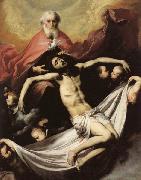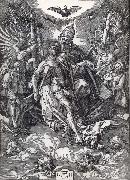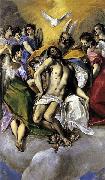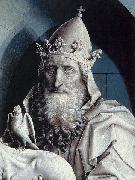Wholesale Oil Painting No Minimum |
|||||||||||
|
|
|||||||||||

|
|||||||||||
|
|
|
||||||||
Jose de RiberaSpanish Painter and Print engraver , 1591-1652 Information concerning the life and personality of Jusepe de Ribera is sparse. He was born the son of a shoemaker in Jetiva, Valencia Province. He appears to have gone to the city of Valencia while still a boy, but nothing is known of his possible artistic training there. As an adolescent, he traveled to Italy and spent time in Lombardy. Next he was in Parma, from which, it is said, he was driven by the contentious jealousy of local artists. He located himself in Rome until an accumulation of debts forced him to flee. Finally he settled in Naples, where in 1616 he married Caterina Azzolino, the daughter of a painter, by whom he had seven children between the years 1627 and 1636. The Academy of St. Luke in Rome elected Ribera to membership in 1625, and 6 years later the Pope conferred upon him the Order of Christ. It is understandably speculated that Ribera revisited Rome for these events. Being sought after in Naples by the Church and the various Spanish viceroys who ruled there in the name of the Spanish monarchy, he dismissed the idea of returning to his homeland. He was quoted as saying that he was honored and well paid in Naples and that Spain was a cruel stepmother to its own children and a compassionate mother to foreigners. Nevertheless, he generally added his nationality when he signed his works. This practice inspired the Italians to nickname him "the Little Spaniard" (Lo Spagnoletto). The last decade of Ribera's life was one of personal struggle. He suffered from failing health, the taunts of other artists that his fame was "extinct," and difficulty in collecting payments due him. Nevertheless, he kept it from being a tragic defeat by continuing to paint until the very year of his death in Naples. Actually, he was the victim of the local politics and finances. Naples was in the throes of a severe economic depression for which the foreign rulers, the patrons of Ribera, were naturally blamed, and the desperate citizenry was rioting in the streets. It is significant that Ribera continued to receive commissions in such a time, even if there was a dearth of payments. Ribera was inventive in subject matter, ranging through visionary spectacles, biblical themes, genre, portraits, mythological subjects, and portraits of ascetics and penitents. |
||||||||
|
|
||||||||
The Holy Trinity
The Holy Trinity Painting ID:: 28556 |
mk61
c.1635
Oil on canvas
226x118cm
mk61 c.1635 Oil on canvas 226x118cm |
|||||||
|
|
||||||||
Albrecht Durerb.May 21, 1471, Imperial Free City of Nernberg [Germany] d.April 6, 1528, Nernberg Albrecht Durer (May 21, 1471 ?C April 6, 1528) was a German painter, printmaker and theorist from Nuremberg. His still-famous works include the Apocalypse woodcuts, Knight, Death, and the Devil (1513), Saint Jerome in his Study (1514) and Melencolia I (1514), which has been the subject of extensive analysis and interpretation. His watercolours mark him as one of the first European landscape artists, while his ambitious woodcuts revolutionized the potential of that medium. D??rer introduction of classical motifs into Northern art, through his knowledge of Italian artists and German humanists, have secured his reputation as one of the most important figures of the Northern Renaissance. This is reinforced by his theoretical treatise which involve principles of mathematics, perspective and ideal proportions. His prints established his reputation across Europe when he was still in his twenties, and he has been conventionally regarded as the greatest artist of the Renaissance in Northern Europe ever since. |
||||||||
|
|
||||||||
|
|
The holy trinity
The holy trinity Painting ID:: 42454 |
mk168
392x284mm
1511
mk168 392x284mm 1511 |
||||||
|
|
||||||||
El GrecoGreek-born Spanish Mannerist Painter, 1541-1614 Considered a representative of late Renaissance Spanish art, El Greco was actually born in Greece, on the island of Crete. After studying in Venice under Titian, El Greco settled in Toledo, Spain in 1577. At the time he was wildly popular, his emotionally religious paintings being just the ticket for the hometown of the Spanish Inquisition. After his death his work was largely ignored until the beginning of the 20th century; now he considered one of the inspired geniuses of Western art. His distinctive style features bold shapes and colors, with elongated and slightly distorted figures. In Toledo El Greco was in constant demand and liked living large: he maintained a private orchestra to accompany his meals. |
||||||||
|
|
||||||||
|
|
The Holy Trinity
The Holy Trinity Painting ID:: 59161 |
The Holy Trinity (1577?C1579, 300 ?? 178 cm, oil on canvas, Museo del Prado, Madrid, Spain) was part of a group of works created for the church "Santo Domingo el Antiguo". The Holy Trinity (1577?C1579, 300 ?? 178 cm, oil on canvas, Museo del Prado, Madrid, Spain) was part of a group of works created for the church "Santo Domingo el Antiguo". |
||||||
|
|
||||||||
Robert Campin1406-1444 Robert Campin Location South Netherlandish painter. He is first mentioned in 1405-6 as a painter in Tournai. As he purchased citizenship there in 1410, he may have been born elsewhere. There is evidence of some connection with Valenciennes, where the name Campin is said to have been common, but nothing certain is known of his artistic training and background. |
||||||||
|
|
||||||||
|
|
The Holy Trinity
The Holy Trinity Painting ID:: 83956 |
Date ca. 1410(1410)
Medium Oil on wood
cjr Date ca. 1410(1410) Medium Oil on wood cjr |
||||||
|
|
||||||||
Lorenzo Lippi1606-65 Italian painter and poet. He was trained by Matteo Rosselli, with whom he worked for many years in close partnership. His collaboration was sometimes anonymous but is documented from 1622, when they decorated the ceiling of the Sala della Stufa (Florence, Pitti), to 1631-2, when they worked together on lunettes portraying St Francis Adoring the Child and St Catherine in Prison (Florence, S Gaetano). In 1630 Lippi was enrolled in the Accademia del Disegno but appears not to have had his own workshop until after 1634, although he worked independently before then. The earliest paintings attributable to him are, both in facial types and in the soft, rich folds of the drapery, close in style to the work of Rosselli. Examples include canvases of the Apostles James, John and Matthew, and Christ Blessing (all 1628; Vaglia, S Pietro), and the Virgin Handing the Child to St Francis (1629; Florence, S Salvatore di Camaldoli). In the 1630s Lippi painted decorative and theatrical compositions, mainly on literary and biblical themes, which remained indebted to Rosselli, for example Samson and Delilah (1632; Stockholm, Nmus.) and the Virgin in Glory with Saints (1634; Ronta, nr Barberino di Mugello, S Michele). Shortly afterwards he produced works |
||||||||
|
|
||||||||
|
|
The Holy Trinity
The Holy Trinity Painting ID:: 86594 |
1665(1665)
Medium Oil on canvas
cyf 1665(1665) Medium Oil on canvas cyf |
||||||
|
|
||||||||
|
Lorenzo Lippi 1606-65 Italian painter and poet. He was trained by Matteo Rosselli, with whom he worked for many years in close partnership. His collaboration was sometimes anonymous but is documented from 1622, when they decorated the ceiling of the Sala della Stufa (Florence, Pitti), to 1631-2, when they worked together on lunettes portraying St Francis Adoring the Child and St Catherine in Prison (Florence, S Gaetano). In 1630 Lippi was enrolled in the Accademia del Disegno but appears not to have had his own workshop until after 1634, although he worked independently before then. The earliest paintings attributable to him are, both in facial types and in the soft, rich folds of the drapery, close in style to the work of Rosselli. Examples include canvases of the Apostles James, John and Matthew, and Christ Blessing (all 1628; Vaglia, S Pietro), and the Virgin Handing the Child to St Francis (1629; Florence, S Salvatore di Camaldoli). In the 1630s Lippi painted decorative and theatrical compositions, mainly on literary and biblical themes, which remained indebted to Rosselli, for example Samson and Delilah (1632; Stockholm, Nmus.) and the Virgin in Glory with Saints (1634; Ronta, nr Barberino di Mugello, S Michele). Shortly afterwards he produced works The Holy Trinity 1665(1665) Medium Oil on canvas cyf |
||||||||
|
|
||||||||
|
Prev Next
|
||||||||
|
|
||||||||
|
Related Paintings to Lorenzo Lippi :. |
||||||||
|
|
||||||||
|
CONTACT US |





